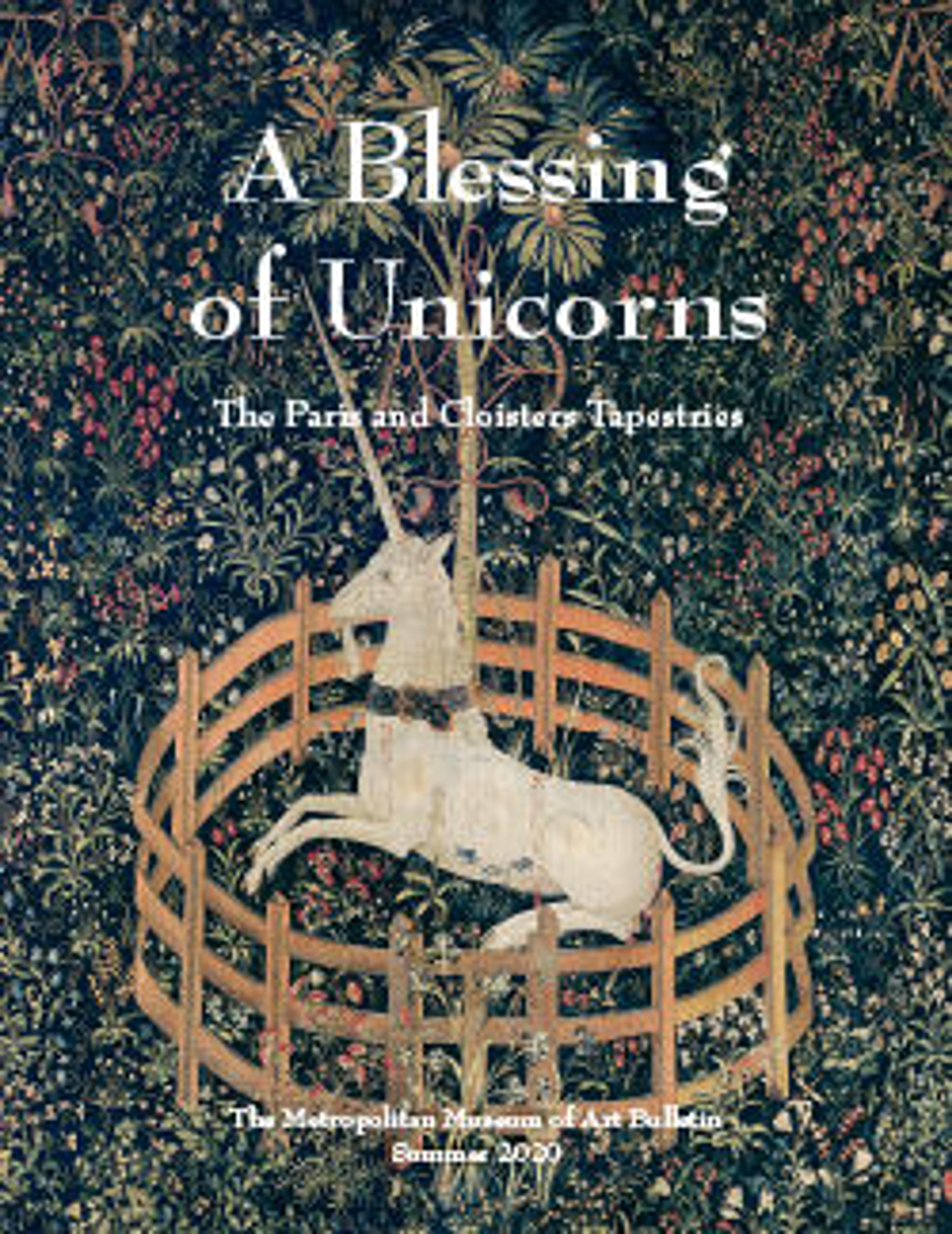The Hunters Return to the Castle (from the Unicorn Tapestries)
Artwork Details
- Title: The Hunters Return to the Castle (from the Unicorn Tapestries)
- Date: 1495–1505
- Geography: Made in Paris, France (cartoon); Made in Southern Netherlands (woven)
- Culture: French (cartoon)/South Netherlandish (woven)
- Medium: Wool warp with wool, silk, silver, and gilt wefts
- Dimensions: Overall: 145 x 153in. (368.3 x 388.6cm)
- Classification: Textiles-Tapestries
- Credit Line: Gift of John D. Rockefeller Jr., 1937
- Object Number: 37.80.5
- Curatorial Department: Medieval Art and The Cloisters
Audio
68. The Unicorn Is Killed and Brought to the Castle (from the Unicorn Tapestries)
Gallery 17
NARRATOR: On this tapestry, the unicorn is killed. At the upper left, two hunters stab the animal with their lances. The body of the unicorn is shown in the center of the tapestry, lifeless, on the back of a horse. The hunters are presenting their trophy to a noble couple, who stand with attendants to their sides in front of a castle. Many details on this tapestry have been interpreted as allusions to Christ’s Passion. Most notably, the hunter directly below the unicorn catches the animal’s blood with a hunting horn. This calls to mind depictions of the Crucifixion in which angels gather Christ’s blood in chalices. The wreath of oak branches and thorns around the dead unicorn’s neck and horn is often seen to represent the Crown of Thorns, therefore Christ’s Passion. The lack of original documentation makes it difficult to understand fully the meaning of these tapestries – the sequence of events, the identity of figures, and the many religious, chivalric, or other allusions. Take the man and woman receiving the unicorn’s body: are they the noble couple who commissioned the hunt? Are these portraits of the original owners? Or do they represent, symbolically, the Virgin Mary and John who receive the body of Christ? These questions are indicative of the complex issues that have challenged generations of scholars. The last stop in this room is to the right of the window.
More Artwork
Research Resources
The Met provides unparalleled resources for research and welcomes an international community of students and scholars. The Met's Open Access API is where creators and researchers can connect to the The Met collection. Open Access data and public domain images are available for unrestricted commercial and noncommercial use without permission or fee.
To request images under copyright and other restrictions, please use this Image Request form.
Feedback
We continue to research and examine historical and cultural context for objects in The Met collection. If you have comments or questions about this object record, please contact us using the form below. The Museum looks forward to receiving your comments.
